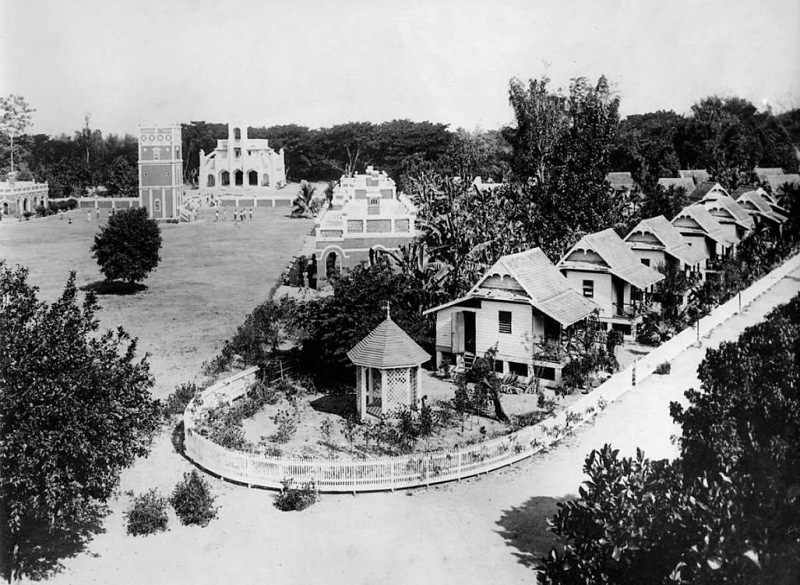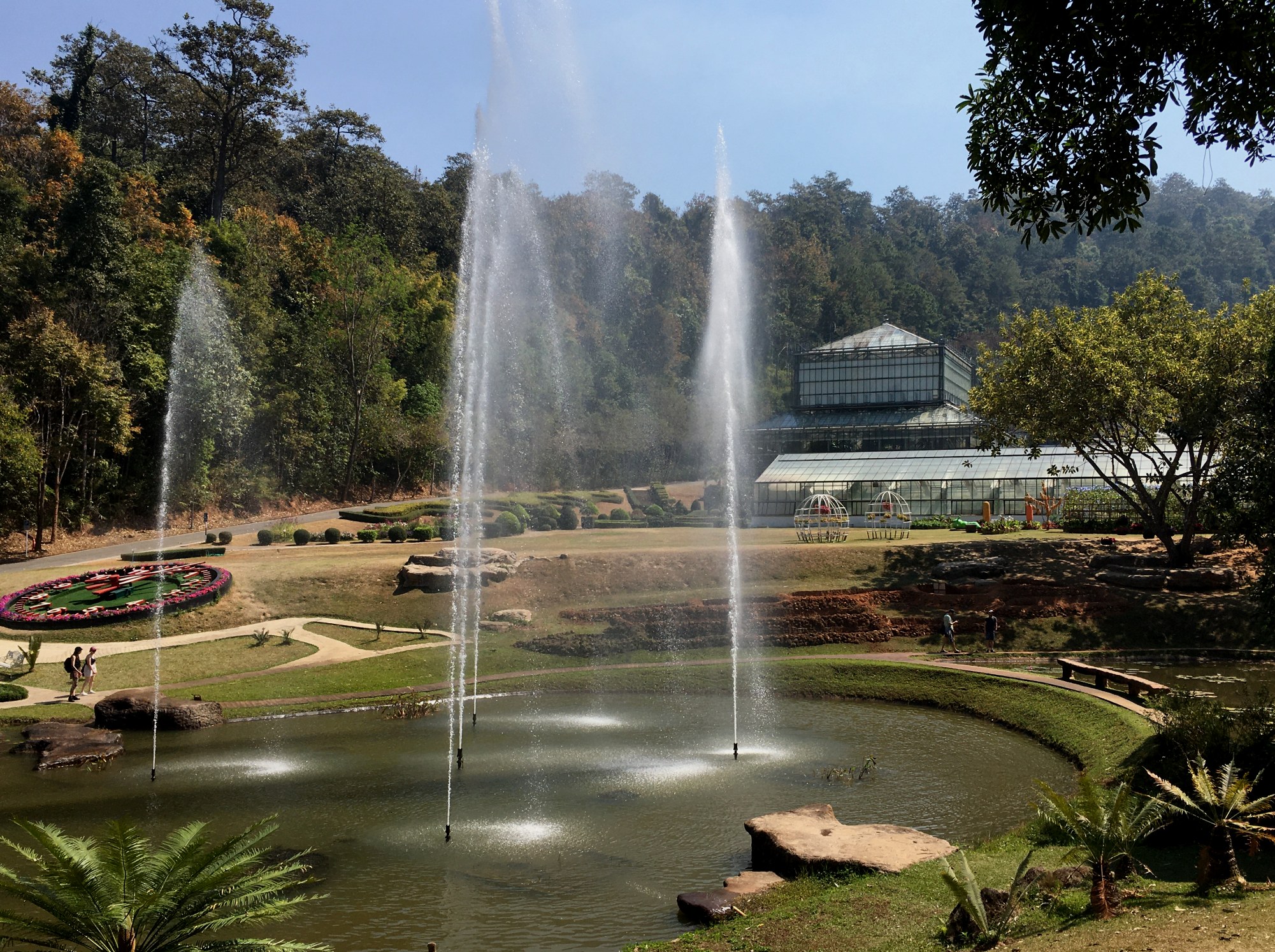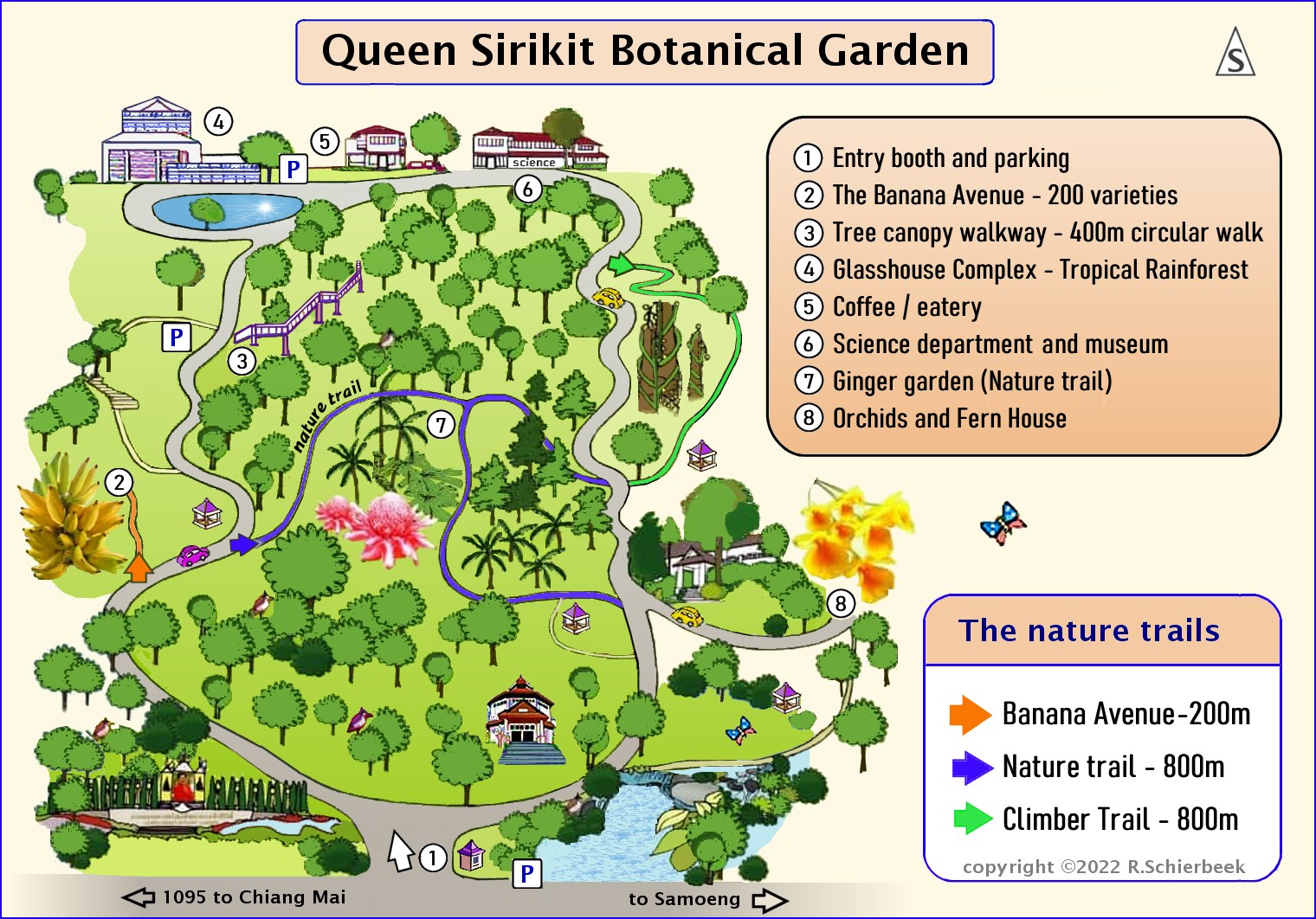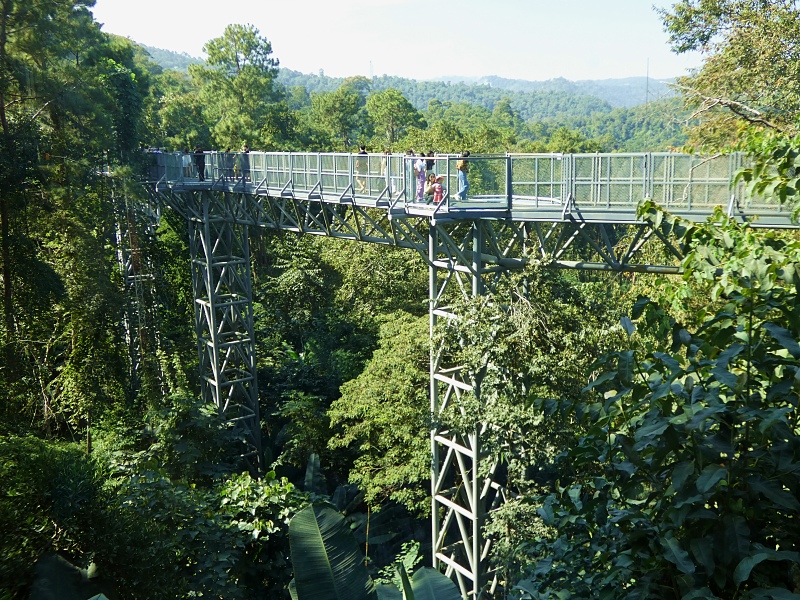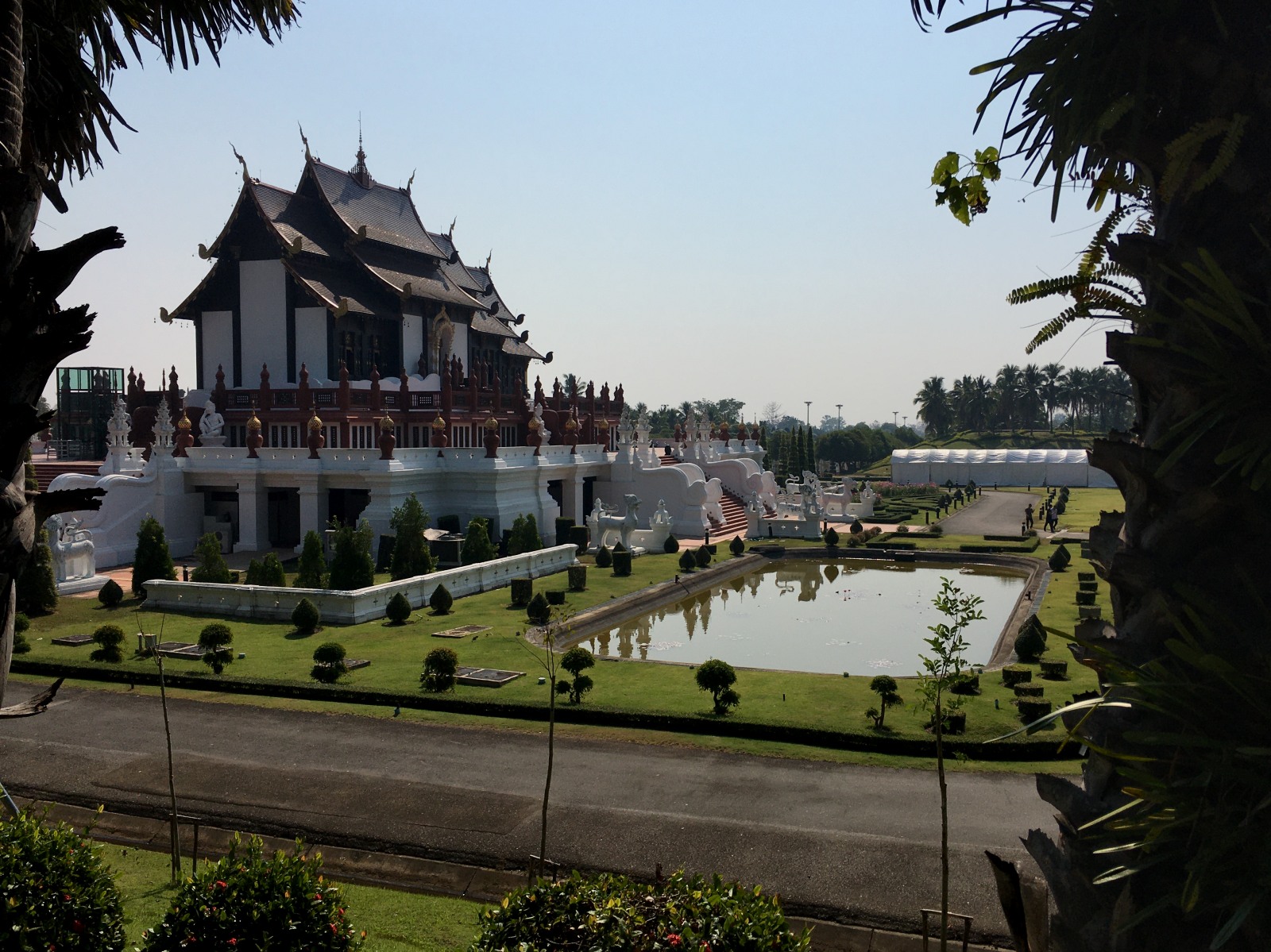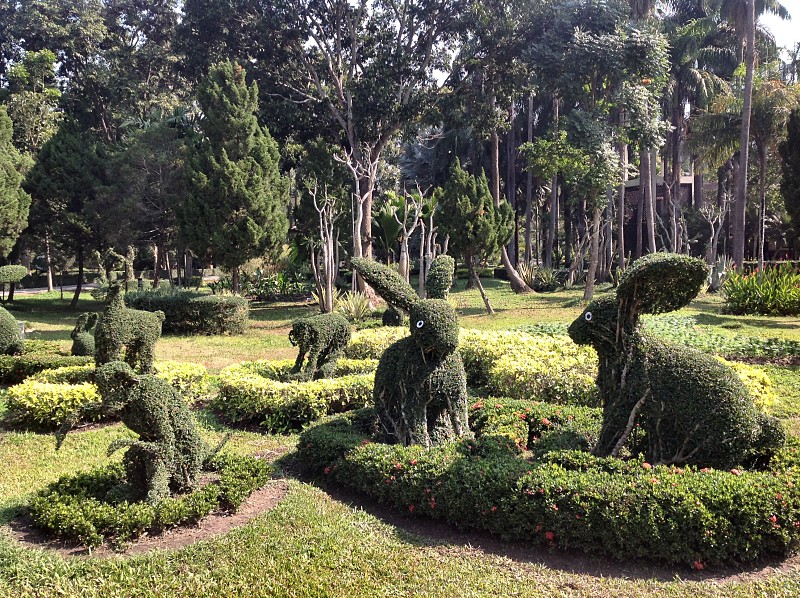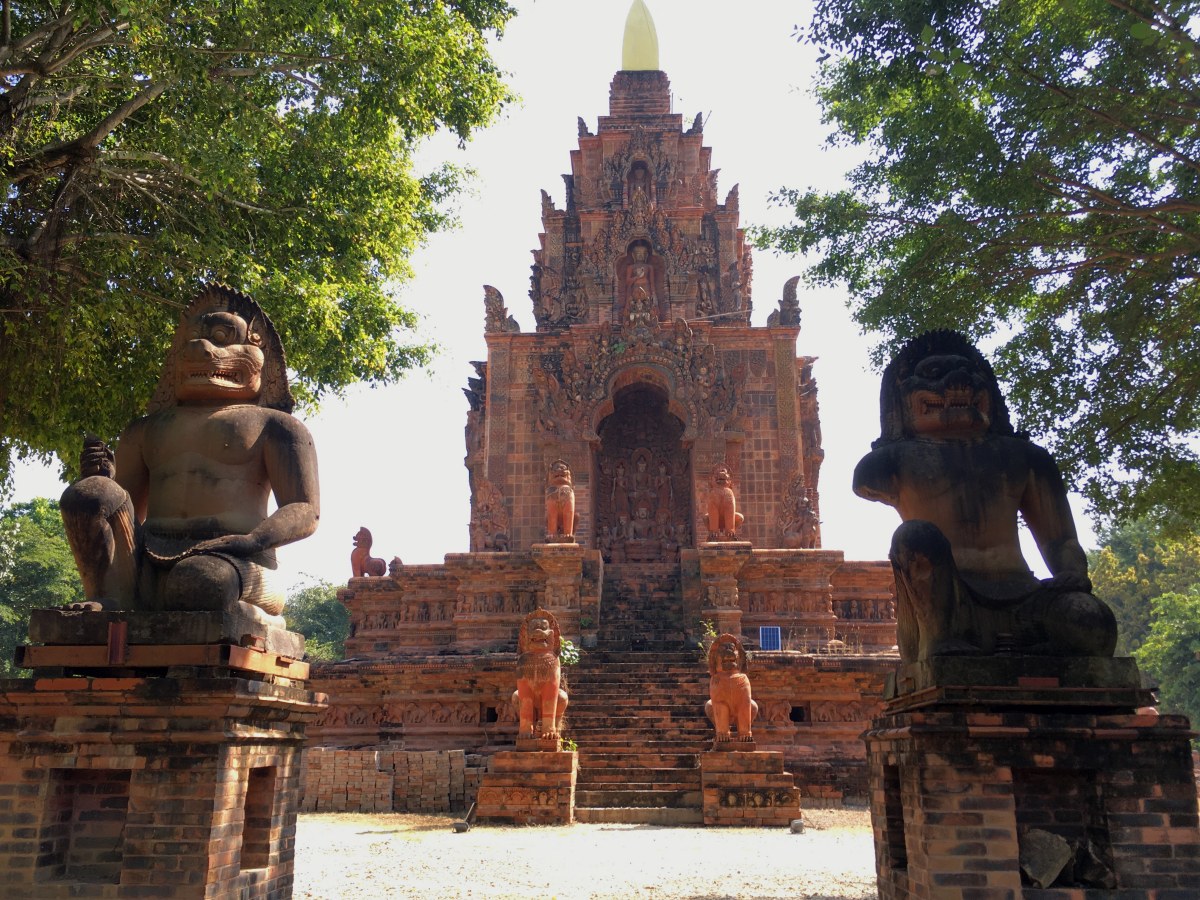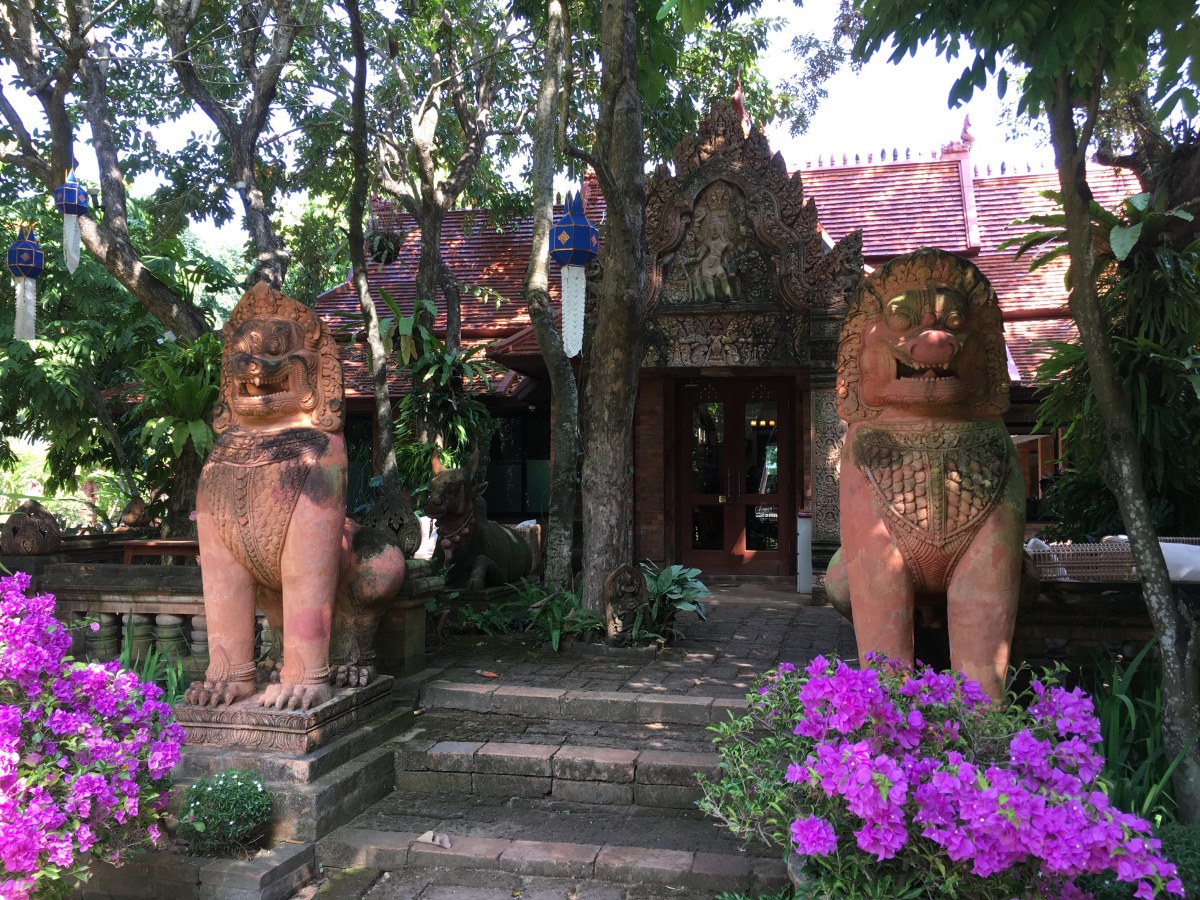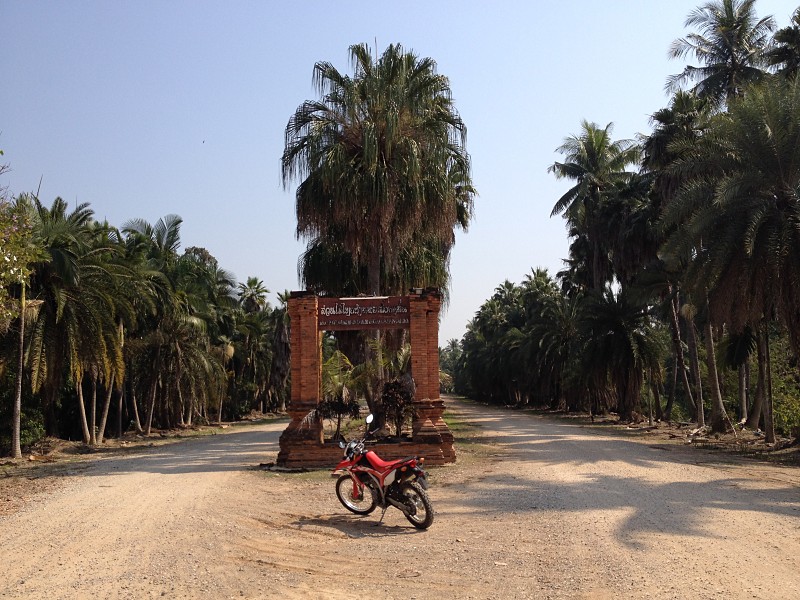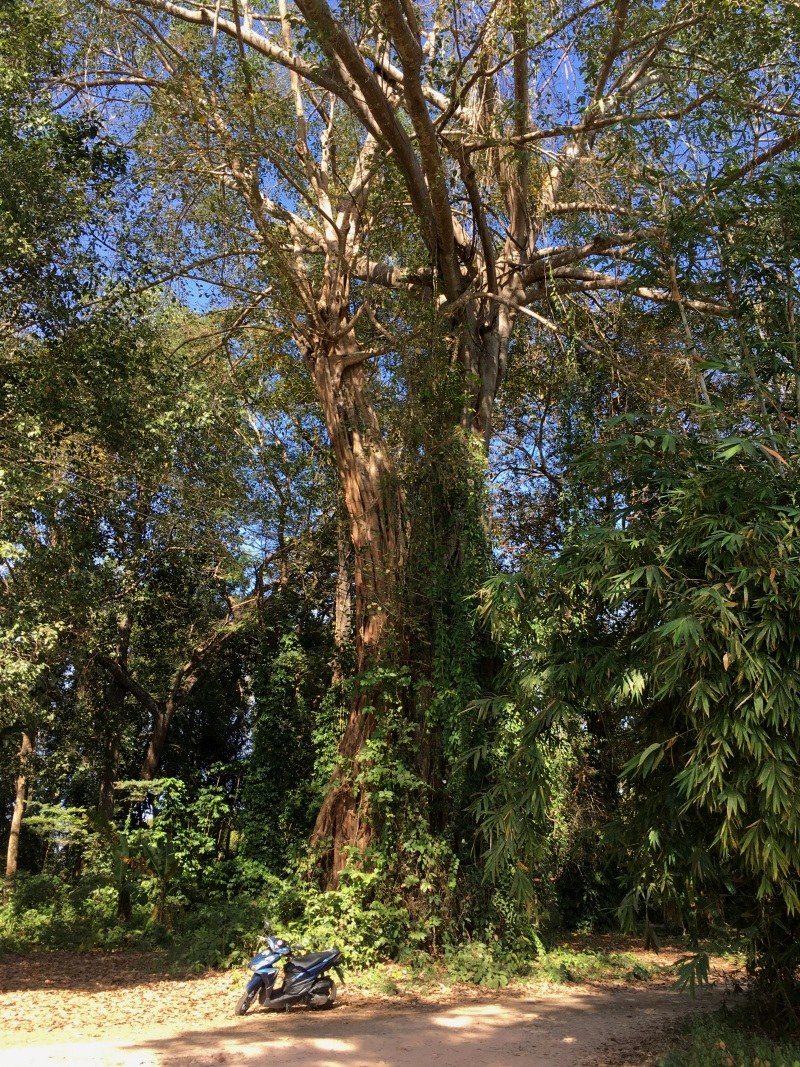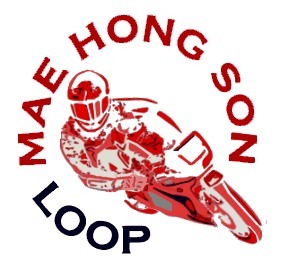| ||||||||||||||||
|
Last update: Apr 6, 2024
A travel guide to Chiang Mai.
Introduction.Chiang Mai is a city large city in the northern region of Thailand, known for its rich history, cultural heritage, and natural beauty. Founded in 1296, Chiang Mai was once the capital of the ancient Lanna Kingdom and has since become a vibrant hub of temples, art, and cuisine. The city is surrounded by mountains and forests, making it a popular destination for outdoor enthusiasts, while its countless temples, markets, and festivals offer visitors a glimpse into the local way of life. Whether you're interested in exploring centuries-old temples, trekking, elephant camps or enjoying a delicious coffee, Chiang Mai has something for everyone. Chiang Mai is not just a food destination, but also Thailand’s coffee capital, where every street and ally has one or two coffee shops. Where to stay in Chiang Mai.Chiang Mai can be divided into three areas, namely the Old town, the Night bazaar and the Riverside area. These are all quite different in character, and where you want to stay depends on your budget too. The Old town has a range of hostels, guesthouses, budget hotels, but also luxury hotels, the Night bazaar is a modern area with high-rise hotels, the Riverside is where some luxury hotels and resorts are.
For most people the best place to stay is in the old town, and as close to Thapae Gate as possible. Thapae Gate is a lively square and the center of activities; the true "hub" of Chiang Mai. The riverside area is walkable from here, the famous Sunday night market is right in the old town and starts from Thapae Square, and most hotels and restaurants are also in the old town. The old town is a pleasant oasis, an old historic square town inside a metropolis of a million people that is Chiang Mai today. There are many interesting old temples (Wats) and cute little streets that date back hundreds of years. But make no mistake, Chiang Mai has become a large, modern town in the last 50 years. It is not an original town like, for example, Phrae, which was the center of the teak industry in Northern Thailand. Nimmenhaemin road and -area is the trendy neighborhood of Chiang Mai. This trendy neighborhood has a lot of modern high-rise buildings and is popular with CMU University students and digital nomads who stay longer periods in apartments and condominiums. However, it is a very long walk to the historic areas in the Old Town.
|
|
Lanna Culture: a walk into the past.Thapae gate is the best place for a walk into the old town of Chiang Mai, westward on Ratchadamnoen road, the main east-west street in the old town. Ratchadamnoen means Royal Promenade or Royal Road, and it runs straight from Thapae gate to Wat Phra Singh temple, the most important royal temple in town. Looking left and right, there are only modern buildings around; on the left a posh Honda dealer, next to it a large Toyota car dealer, on the right a Yamaha motorbike dealer, modern hotels, lots of restaurants, and also the occasional Wat. The Thai conservation philosophy is: "If money can be made by razing a fine old wooden building and replacing it with concrete crap, then go for it."
Right at the first crossing is a very good place, the Wawee coffee shop, where one can sit down with a good cappuccino and watch the goings on. The terrace of the coffee shop is also an excellent place to observe the Sunday market, once this has filled up with throngs of tourists in the evening. First time arrivals with large backpacks often walk down Ratchadamnoen road in search of a hostel or guesthouse, unaware of the fact that this main road has only upmarket hotels. The guesthouses are usually located on the alleys and backroads that are easily missed. The old town has mostly modern buildings, but there is the occasional old teakwood house. After 2 blocks on the left there is the Lanna Architecture Center, which is a traditional house located at the crossing of Ratchadamnoen and Prapokklao road. There are very few restrictions on new buildings in Chiang Mai; the old town within the moat has a building height restriction of 23 metres, or eight floors. Buildings within a 100 metre radius of temples can be no higher than nine metres. Modern development has always been more important in Thailand than preserving heritage buildings. Thai people usually prefer short-term profit over long-term preservation. Apart from a few traditional wooden houses, what remains of the ancient town of Chiang Mai are the many Wats. Because they were sacred places and rarely sold or destroyed, most of these temples are still there. The many wooden houses have mostly disappeared, but there are some left in the corners of the town. How many temples were there 130 years ago, compared to now? Read it here: King Inthawichayanon's map. At the end of Ratchadamnoen road, about 1 km walking from Thapae gate, is Wat Phra Singh; probably the most important temple of the town. A few special temples.
In the back of the Wat Phra Singh compound is a modest temple, the Viharn Lai Kham. Viharn Lai Kham, famous for its wall paintings, is a small building behind the main temple of Wat Phra Singh, the large Viharn Luang temple. Luang means large, so Viharn Luang simply means "Large temple". Lai Kham is a type of mural art made by a special painting method that is unique to the northern region of Thailand. It is a technique of gold-leaf stenciling, and as you can see below, the walls and the pillars of Viharn Lai Kham are decorated in red-and-gold patterns.
The murals on the right (the north wall) of Viharn Lai Kham show the history of Prince Sang Thong (Songthong), and on the left (the souithern wall) the history of Suwanna Hongse (Suwannahong). These murals were created during the 1820's, and the artist has painted himself above the window in the middle.
The murals were extensively restored in 2008. The murals on the souithern wall, the history of Suwanna Hongse, have mostly disappeared over the centuries.
Wat Jed Yod (Ched Yot) is probably one of the least visited major temples because it is located outside of the old town in an inconvenient place. Jet Yod translates to "seven peaks" and refers to the seven chedis which top the rectangular temple. For Thailand, it is a very unusual temple building, because it is a copy of the Mahabodhi Temple at Bodhgaya in India.
Jed Yod was built in the fifteenth century to host the Eighth World Buddhist Council.
Wat Jed Yod is a Mahabodhi temple design. The Mahabodhi has a large central tower and several smaller ones, and it is inspired by the famous Mahabodhi Temple at Bodhgaya in India. Jet Yod in Thai means seven peaks, because there are seven towers on top ot the temple. The Mahabodhi type of temple is one of the most copied temples in Asia. The Wat Jed Yod compound has a Bodhi tree, a very large Chedi, a Vihara, and several other buildings belonging to the monastery. Wat Ket Karam or Wat Sra Ket is a small but nice temple on the eastern riverside road, and it has its own little museum.
The Wat Ket area has many interesting old houses which have been turned into galleries and cafes. Some of the trendy restaurants are very popular at night, and in the afternoon, there is a good view of the Ping river to enjoy. How to get there: cross Nawarat bridge, turn left and walk a short distance north. One can also cross the footbridge at Warorot market, and end up just in front of Wat Ket Karam.
|
| Unexplored museums.After a few days in Chiang Mai, you may have been up to Doi Suthep, enjoyed the panoramic views of the valley and Chiang Mai in the distance, and seen the famous famous Wat Phra That Doi Suthep. And your may have done a temple tour, small or large; for an afternoon or a few days, depending on your interest. Fed the pigeons at Thapae square. Sampled some of the many different restaurants, the many vegetarian places, the modern Japanese restaurants. Now you're looking for something else to do. Chiang Mai is also an important cultural city and a center of Lanna art; it can be traditional art or modern art. The area around Chiang Mai has many unique museums, apart from the well-known official ones. Some smaller or private museums are very interesting but relatively unknown; here are a few examples. The Chiangmai Art Museum has been around for quite a few years, but is totally unknown among foreign tourists, perhaps because it is well outside of Chiang Mai town. Located about half an hour drive away, past San Kamphang on the 1006 road. This is a wonderfull contemporary art museum, mostly modern paintings but some sculpture as well. I liked it better than the MAIIAM museum. Some quite amazing paintings in 3 large halls. There is a small cafe nearby, with limited choices. Drive around the huge property for some outside art surprises. Entrance fee is 100 baht.
The MAIIAM Museum of Contemporary Art opened its doors in 2016. Located less then half an hour drive away, before San Kamphang on the 1006 road, 12 km east of Chiang Mai. The Museum houses the Bunnag-Beurdeley family’s permanent collection.
Entrance fee is 150 baht; seniors 100 Baht.
The Dara Pirom Palace Museum is half an hour drive north in Mae Rim village. The museum is not a palace in the Western sense, but a historic wooden mansion; a teakwood Victorian style house which was home to the famous Lanna princess Dara Rasami (also: Dara Rasamee or Dara Rasmi) (wikipedia.org), who was one of the consorts of Chulalongkorn, King Rama V of Siam. Dara Rasami was the daughter of King Inthawichayanon, the 7th Ruler of Chiang Mai from 1870 until 1897. Dara Rasami was also a pawn in the annexation plans of Britain in the 1880-ties, which King Rama V of Siam tried to prevent. The admission fee for the museum is 20 baht per person.
The Lanna Architecture Center is a traditional house located at the crossing of Ratchadamnoen and Prapokklao road, almost in the middle of the old town, and certainly worth a visit if you don't want to go all the way to the Traditional House Museum. It is a colonial house built in 1895 by a European trader, and used to be owned by the prince Chao Burirat. The admission to the 2nd floor is 120 baht, a bit steep since it's just a house, not a museum.
The Treasury Museum, Ratchadamnoen road.
The small Treasury Museum, also known as the Treasury Pavilion is housed in the former residence of Princess Thiphawan on Ratchadamnoen road, opposite the Lanna Architecture Center. The modern building houses an collection of coins showing the evolution of Thai mints from the past to the present days, especially the exhibition of Lanna-style coins. This hidden gem is totally free and showcases a wide variety of mostly special edition silver and gold commemorative coins, as well as paper money. Interesting for numismatic enthousiasts. The Lanna Traditional House Museum is part of the Centre for the promotion of arts and culture, Chiang Mai university. The Museum is located on Doi Suthep road; between the old city and Doi Suthep. It displays 10 traditional wooden Thai Houses and 4 rice barns in a large wooded garden area which is an oasis of peace and calm. If you are interested in how Thai people lived in the 1890's this is a lovely place to visit. Not a Disney interpretation but the real thing; beautiful old teak houses that real people lived in.
Also well worth seeing is the Colonial house, owned by Arthur Lionel Queripel (1878-1946), who was a forest manager for the Bombay Burmah Trading Corporation. The old mansion, built in 1926, is in splendid state, and has been carefully restored. Explanations are in Thai and in English. It gives a view of how European traders lived in CM during the 1920s - 1930s. The garden is dominated by a magnificent Indian walnut tree, and there are some Ebony trees and other special trees. Queripel was a forest manager after all. Chiang Mai University (CMU) museum site: art-culture.cmu.ac.th The Museum is open every day except on public holidays from 8:30 to 4:30 (9am on Saturday/Sunday). Entry fee is 100 baht, free for retirees (60+).
The Roitawarabarn Baan Devalai - Porter house. Roitawarabarn Baan Devalai Museum is located at the bottom of Doi Suthep. Drive westward to the end of Suthep Road, (that's not the road to the top of Doi Suthep, which is Northwest), take a left and then a right and its then up a narrow alleyway right at the bottom of the forest. This is a house/private museum with large hand painted murals, facades, glass etchings and thousands of intricate and traditional Thai art pieces. The house is made of teak and hardwood, and there are also some large Ganesh statues. Still a work in progress, but open to the public. GPS Coordinates: 18.793583, 98.947485
There are plans to modernize the area, and create a McKean park, see the map on the right. McKean is about 10km south of Chiang Mai, just past the ancient city of Wiang Kum Kam. Just south of McKean's entry gate you can drive past some quaint houses and the quirky Suebnathitham Church which seems to be protestant. The eastern moat is dry now, so the colony doesn't look like an island anymore.
These leper colonies were often created on islands to quarantine people with leprosy, and sometimes they were a kind of prison. McKean was no prison, but a humane center for leprosy patients. One can still see the little cottages where the patients lived at the McKean Leprosy Hospital. Only in 1941 a cure was discovered for leprosy, and by the mid-1980s McKean began to adapt, and turned itself into a retirement center. When McKean retired, in 1931, there were more than 500 inhabitants at the center, of which 350 were leprosy patients. There were 143 buildings, including 116 cottages, 9 dormitories, a church, an impressive administration building, and a recreation center.
|
|
Botanical Gardens and ArboretumsBotanical Gardens - 2023
The Queen Sirikit Botanical Garden (QSBG) is in the Mae Sa valley, north of Chiang Mai, and on the "Samoeng loop" (see map on: motorrents.htm). It is a famous, international class arboretum and garden; the largest and best botanical garden in Thailand, set against a mountainside in a large forest. Within the park area are gardens, glasshouses, and trails through the rainforest.
The large glasshouse complex on the top of the trail is a conservatory for a wide collection of tropical plants. The twelve greenhouses contain cacti, ferns, medicinal plants, orchids and other species. The Natural Science Building houses a natural science museum, which is aimed at students. Since 2017 there is also a treetop walkway through the rainforest with a length of more than 400 meters. The botanical garden is quite large and situated on a steep mountainside. Walking up the steep road is possible, but it is more convenient to enter by car or motorcycle and take a short walk on the many side-roads and trails. The map of QSBG below is an improved version of an old tourist map, which shows the nature trails better than the many official maps. The QSBG organization releases a new map every few years, and these give an impression of the garden roads and trails, but are not very accurate or practical. This map is a bit more rational, and has more emphasis on the nature trails. By the way, the trails do have signs in Thai and English.
Once in the garden a 3,6-kilometer loop road runs around the park. This road is on Google Street view; as well as some of the walking trails. There is an open-air bus service that runs within the garden. The nature trails are: The trails are unfortunately not circular, so you have to track back to get back to your vehicle. QSBG entry fee: adult: 150 baht; children: 100 baht. Adults with a Thai ID card: 50 baht. Car (additional) 100 baht. Motorcycle: 30 baht. Bicycles: free.
The Royal Park Rajapruek - A large, modern, park-like garden, 9 hectares of manicured gardens against a mountain back drop. The park is situated to the southwest of the city off route 121 (canal road) and is adjacent to the Chiang Mai Night Safari. On arrival at the enormous empty car park, it can be a bit of a walk to find the entrance. The downside of the park is that there is a long walk between exhibits because the park is oversized. Make sure to go in the cooler morning and take the free shuttle bus service. One can visit some of the the country theme gardens. Several traditional recreated Lanna / Thai buildings are on display, but these are not the interesting, authentic and original houses at the Lanna Traditional House Museum but rather rough recreations. The royal pavilion (Ho Kham Luang) in the middle of the park is a modern piece of architecture supposed to resemble a Lanna palace; from afar it seems an elegant building, somewhat oversized. From up close it is just a modern concrete building. Unfortunately, it has absolutely nothing to do with how the real wooden Ho Kham Luang of the king of Lanna looked. It is a large, pompous building, whereas the original palaces of kings were much smaller, and fully made of wood. Nevertheless, most people visiting the park seem to enjoy it. According to the folder the park wants to promote royal projects and their philosophy: the theory of sustainability, and it also promotes “biodiversity, arts and culture”. But it has no focus: it is not a proper botanical garden, the arts and culture are wishy washy, there are some buildings for education, but some are empty and some are falling apart. Some parts are rundown, buildings are empty, the international displays are unappealing, in short: it fails to impress. A quote from a visitor: “The wife and I both commented at how remarkable the place was for its lack of anything remarkable.” Royal Park Rajapruek entrance fee: 200 baht. Rent a bicycle for 60 baht.
Topiary Garden.Tweechol Botanical Garden is a modern artificial garden and arboretum on a flat area, and thus very different from the QSBG garden which is set against the side of a hill. At about 0,25 square km it is one-tenth of the size of the Queen Sirikit Botanical Garden; which has an area of more than 2 square km. Tweechol garden is walkable, whereas QSBG is so large that a vehicle is necessary to explore the area. One can visit Tweechol in about 2 hours, while it could take half a day to explore QSBG garden. Tweechol is for a large part an artificial topiary garden: sculpted foliage in the form of deer, dolphins, dinosaurs, dragons and gorillas. There is also an arboretum, herb garden, a small petting zoo and a cactus garden. Tweechol Botanical Garden is part of the Horizon Village & Resort, about 30 minutes driving northeast on the 118 road toward Doi Saket. Tweechol Botanical Garden entry fee: 85 baht. Bicycle rent is 75 baht.
|
|
Terracotta Gardens.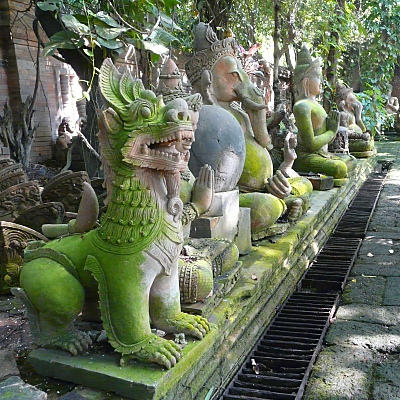
Since 2019 there is a large new hotel, the Phor Liang Meun Terracotta Arts Hotel, built in a sumptuous terracotta style. It is an upmarket hotel, and just across the road is a Terracotta Garden where breakfast is served. The hotel is decorated with larger-than-life terracotta copies of Khmer, Hindu and Thai gods. Shiva, Ganesh, Krishna, Khmer lions and many other statues from neighboring countries sitting peacefully side by side. The new hotel is situated on a small side street of Prapokklao road, to be precise on Prapok Klao Road, Soi 2. The owners of this new hotel also have a terracotta factory near Lamphun, 45km south of Chiang Mai. It is located in the Suanmaithai sculpture garden. The Terracotta Arts Hotel and garden are only for guests, but the Suanmaithai sculpture garden is an alternative.
The Terracotta garden (Suan Mai Thai).
You can visit the terracotta factory, which is located in a large sculpture garden, just west of Lamphun. Mr. Sutthipong Maiwan or Father Dang is the artist, who owns the garden and clay sculpture factory. It became a showroom of art and culture in the middle of an enormous garden of 200 Rai (55 acre) filled with fascinating sculptures. These terracotta sculptures are in the shape of Khmer statues, Indian Avelokatishwaras, Apsara's and other spirits all sitting peacefully together.
There is a restaurant at Suanmaithai garden, which is popular with Thai tourists. Apart from the usual dishes, they have cappucino, cakes, and a large selection of cocktails and mocktails.
How to get to the Terracotta art park:
Drive south on highway 106 to the town of Lamphun. In the center of Lamphun, just past the "Lamphun National Museum", turn right, and follow road 1015 westward. Turn north on 1030 before the Ping river. The nr. 1030 road is not well indicated, it's an intersection with a small road with traffic lights. Once northbound on the nr. 1030 road; pretty soon you'll spot a large entry gate and entrance road to the property. It is about 45km and an hour's drive south of Chiang Mai.
This large resort-like place is private property, but open to the public and has no entry fee. When you go all the way down there, it makes sense to combine it with a visit to Lamphun. Note that the Suanmaithai terracotta art park is a work in progress. In 10 or 20 years it may be a theme park, or still a private property. More on their facebook page: facebook.com
Finally: Arboretums.Don Yen arboretum - A private, hidden arboretum in Ban Pong Din, a small village on the highway number 118 past Doi Saket. This arboretum is open to the public, and part of a low-key private bungalow resort: Pennys Cabins pennycabin.com. How to get there: follow the Takhrai loop.
And there are many more small arboretums, botanical gardens and specialized medicinal plant gardens around Chiang Mai.
And if you want to visit more nature, national parks, and arboretums, you can do the 4-day Mae Hong Son loop. Lots of nature and also a cultural experience; for example the closer you get to Burma, the more tribal people. No botanical gardens on the MHS loop though.
Dual pricing in Thailand.Dual pricing systems are intended to make foreign tourists pay more than locals. In Thailand many museums and attractions use dual pricing, and foreigners also have to pay more than locals to enter a national park. The entry fees for locals are shown in Thai script, and thus not obvious to the western tourist. The museums and botanical gardens often charge 3 or 4 times the normal price to foreigners. That is not as excessive as the national park fees, which can be 5 to 10 times the price for Thai nationals. Only a few museums do not use dual pricing and charge one price for everyone, for example the Dara Pirom Palace Museum, and the MAIIAM Museum.
|
| Literature.www.asla.org - Creating a sustainable future for the Mae Kha Canal in Chiang Mai, by Louisiana State University, 2016
Food links.Other links.
Other Walled Cities in northern Thailand.There used to be many more walled cities in northern Thailand. A few examples are the towns of Lamphun, Lampang, Phrae and Chiang Saen. More about the other historic walled cities in northern Thailand here: thapae.htm
Background: aboutme Any comments? Please mail me at : bytelife AT gmail.com "Not all those who wander are lost." J.R.R. Tolkien
All photos copyright ©2022 R.Schierbeek.
|
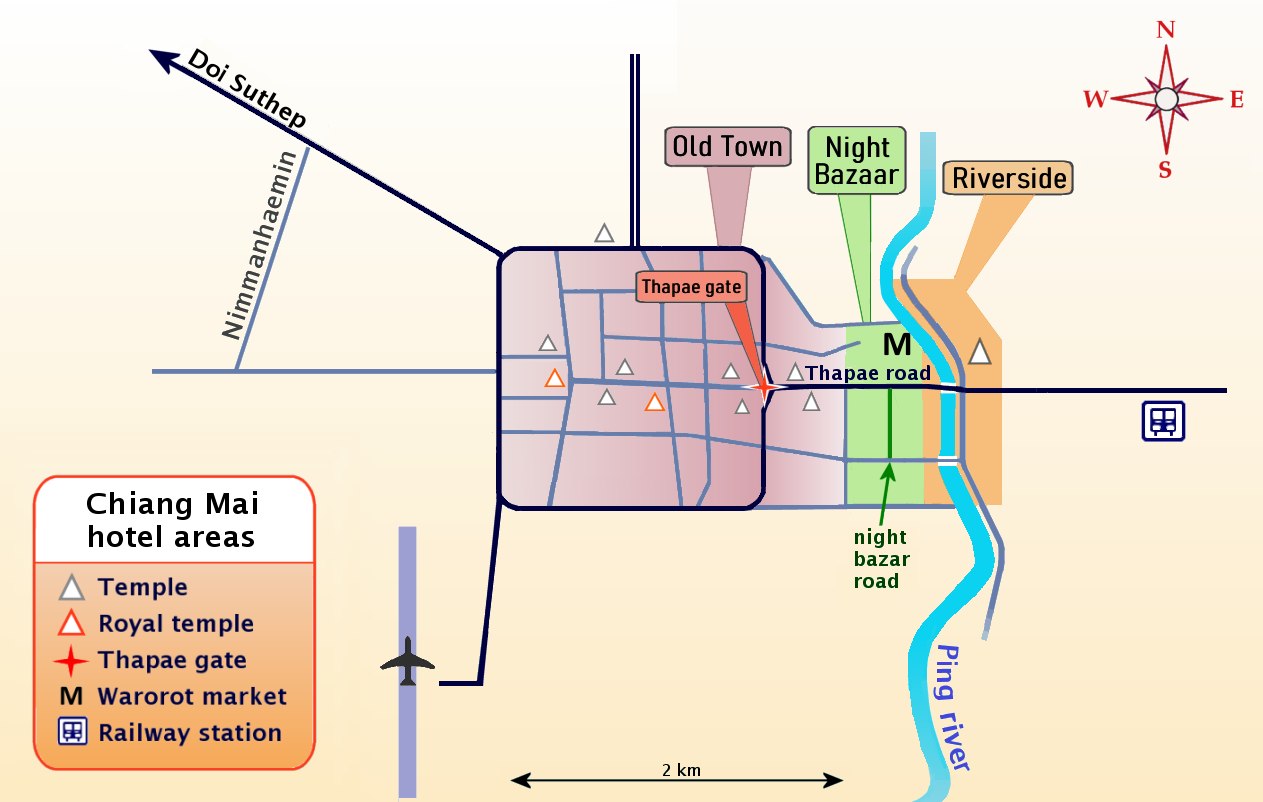
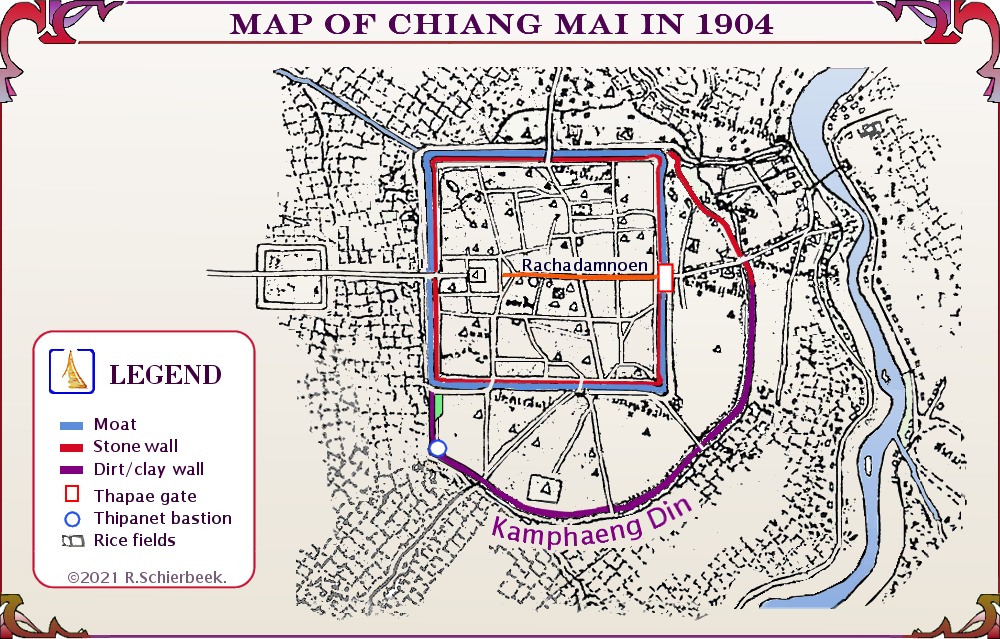
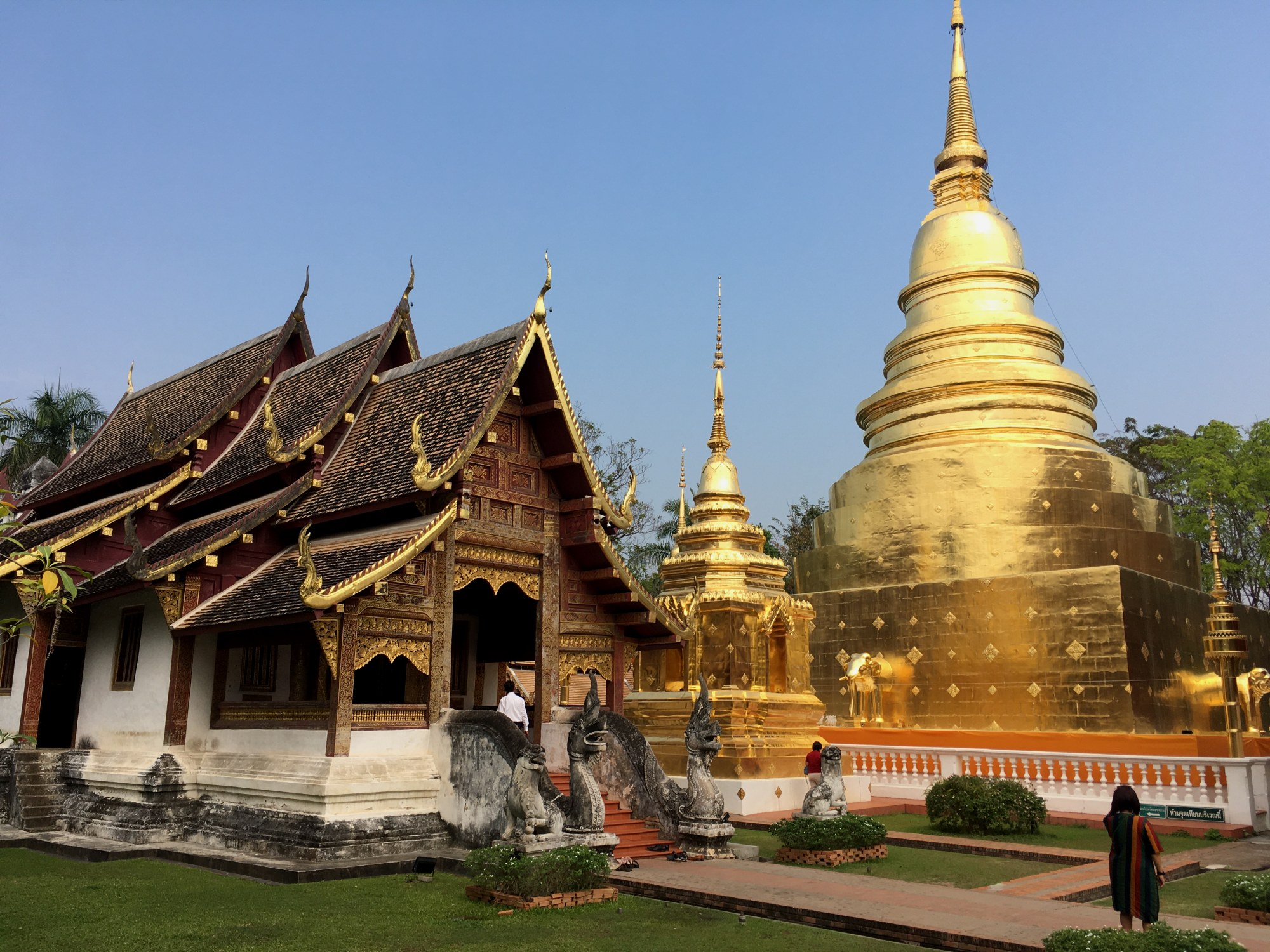
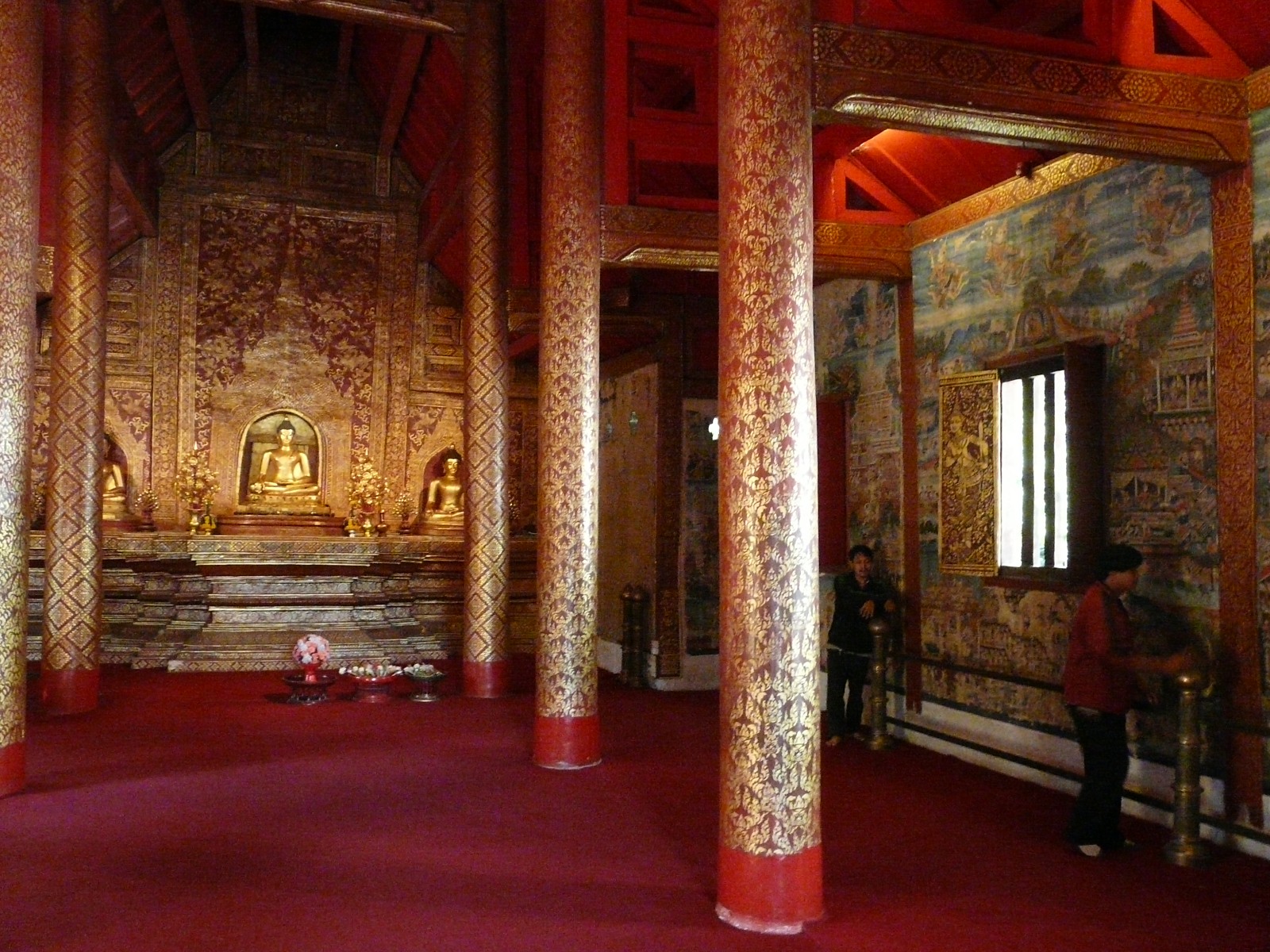
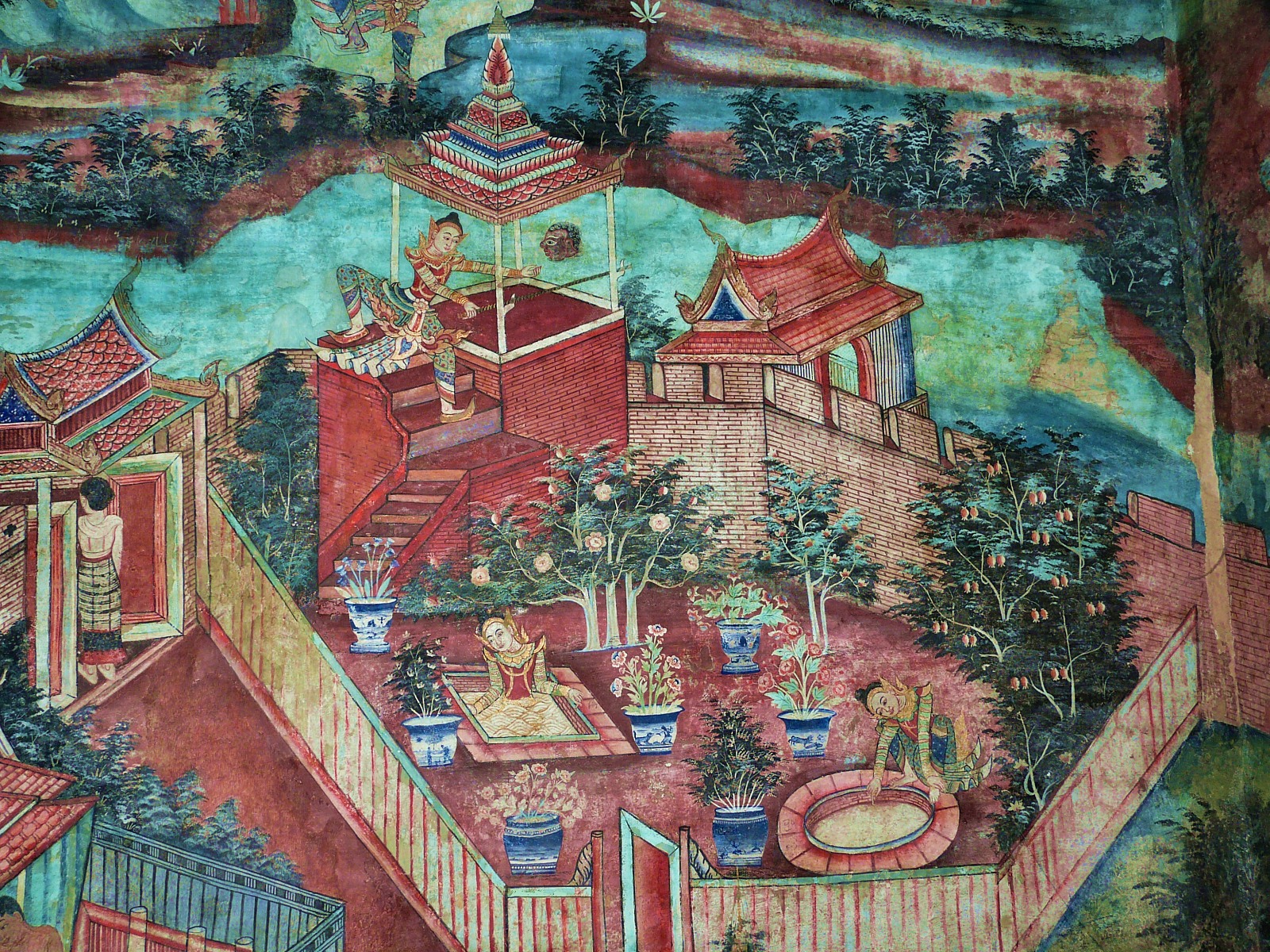
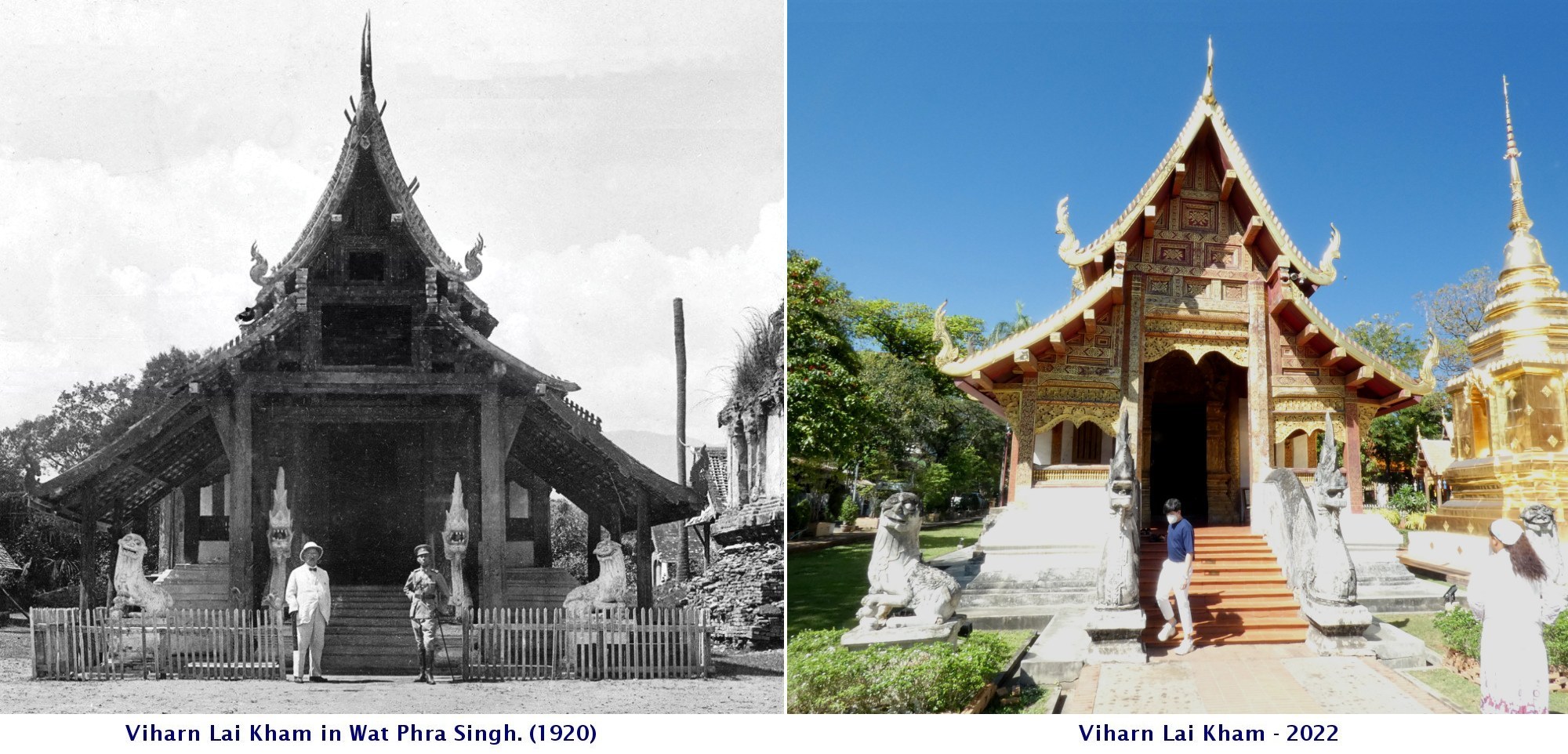
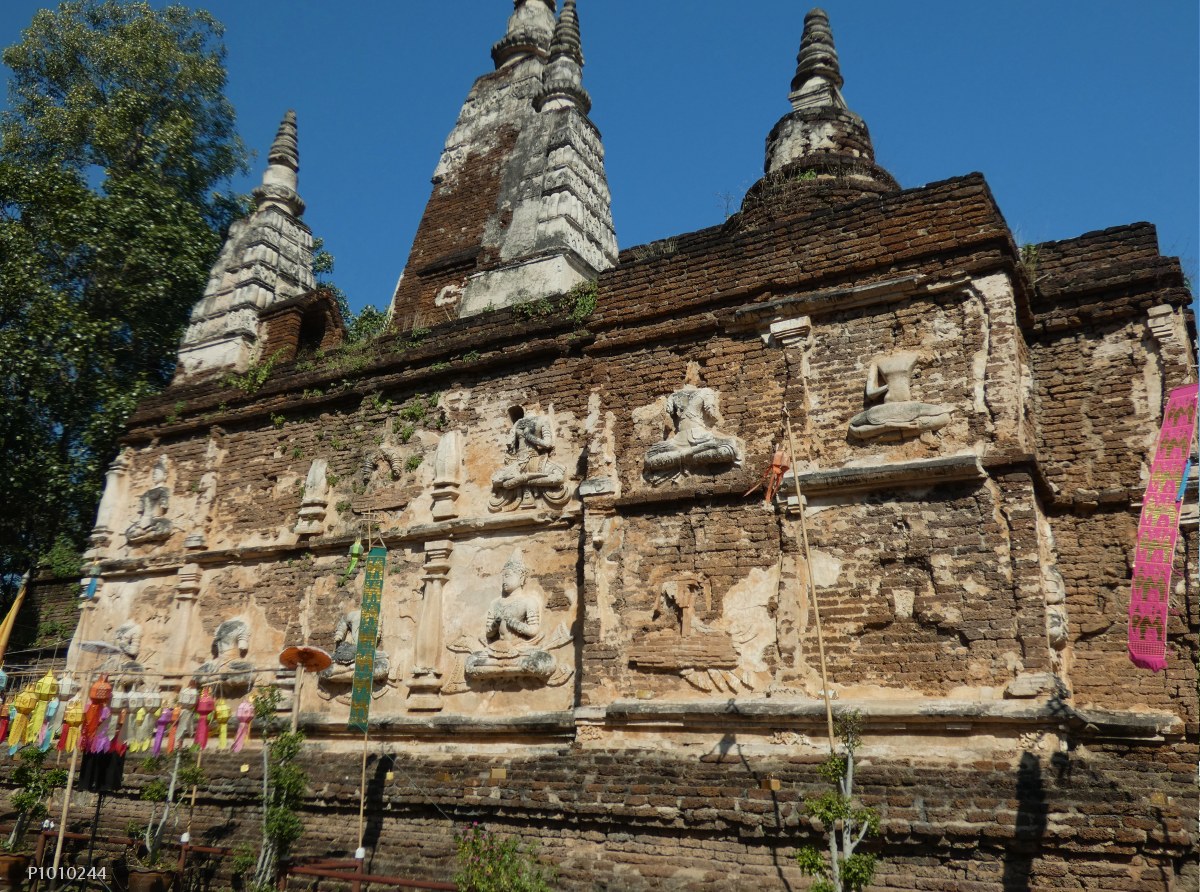
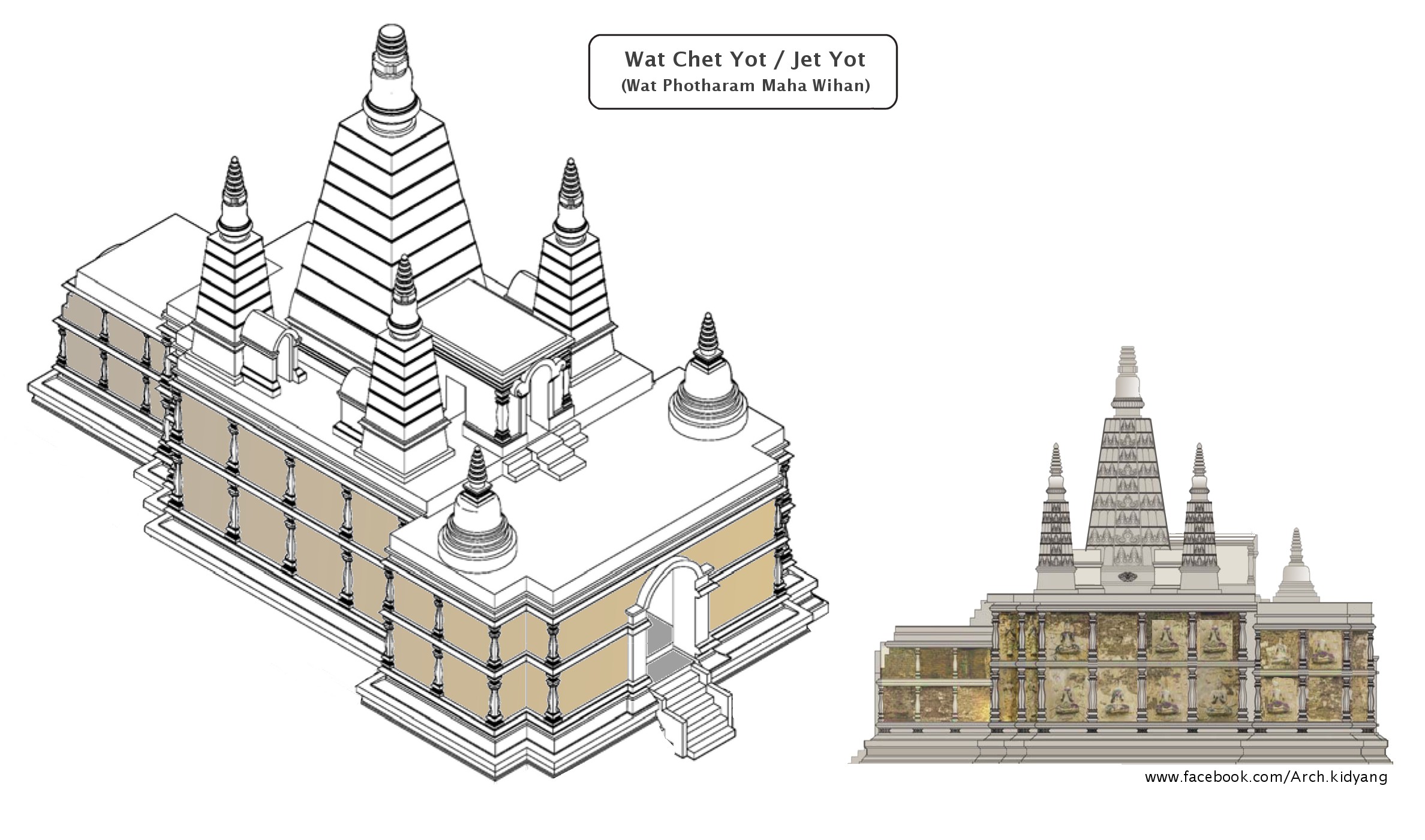
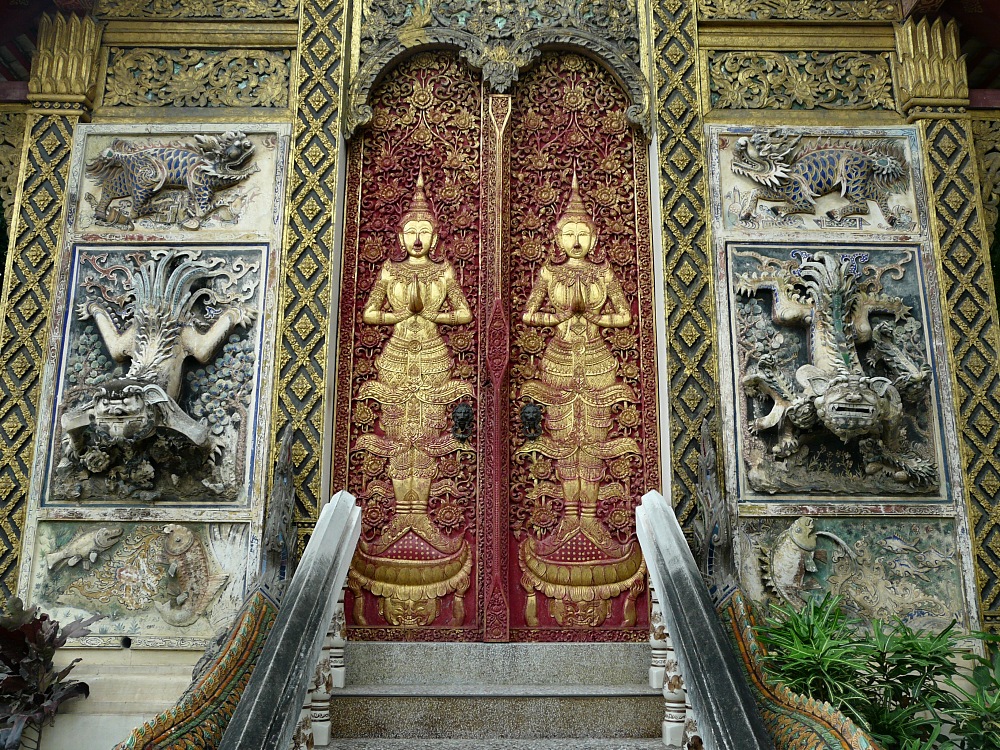
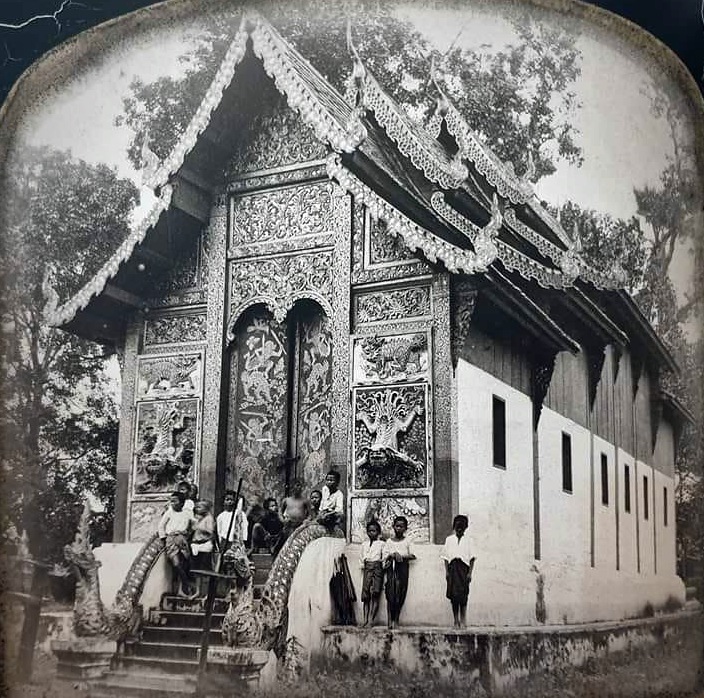 Wat Ket Community Traditional Museum is located inside the Wat Ket temple grounds; it is a somewhat dusty collection; varied items that mostly date from the early twentieth century and perhaps the late nineteenth; like textile, photographs, statues, phones, radios, swords and daggers, old currency and household items. It is an eclectic collection of beautiful, weird, interesting and bizarre objects. No entry fee but there is a donation box.
Wat Ket Community Traditional Museum is located inside the Wat Ket temple grounds; it is a somewhat dusty collection; varied items that mostly date from the early twentieth century and perhaps the late nineteenth; like textile, photographs, statues, phones, radios, swords and daggers, old currency and household items. It is an eclectic collection of beautiful, weird, interesting and bizarre objects. No entry fee but there is a donation box.
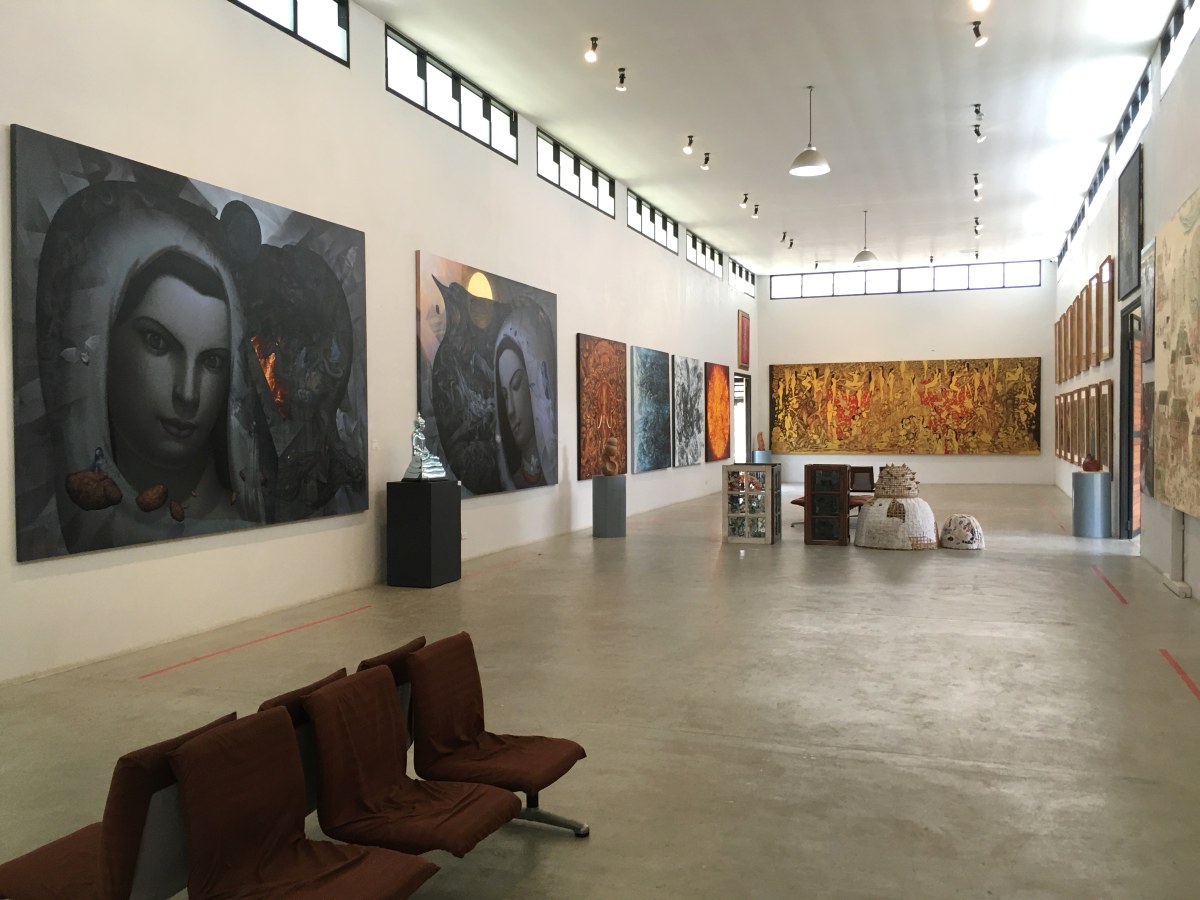
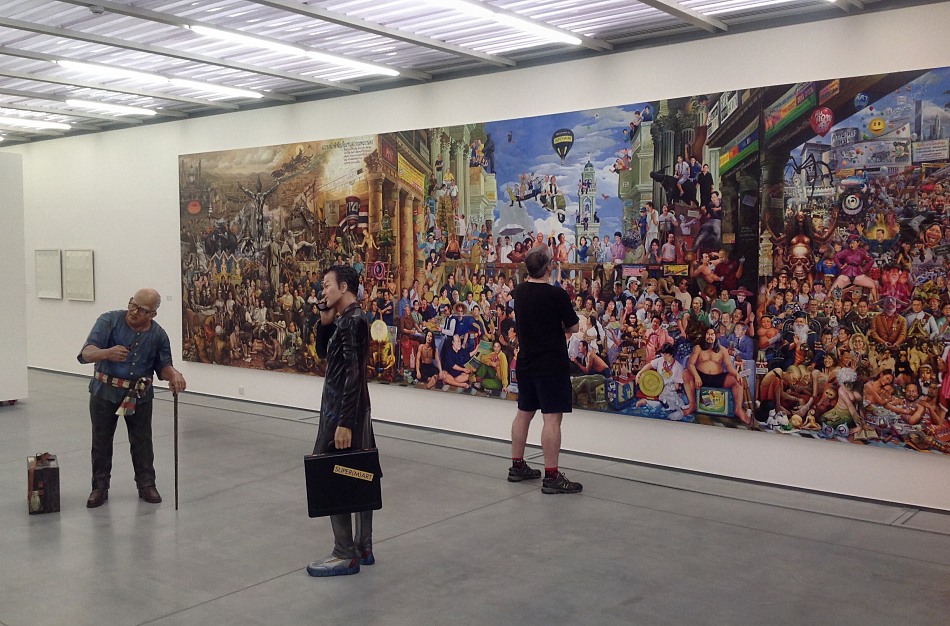
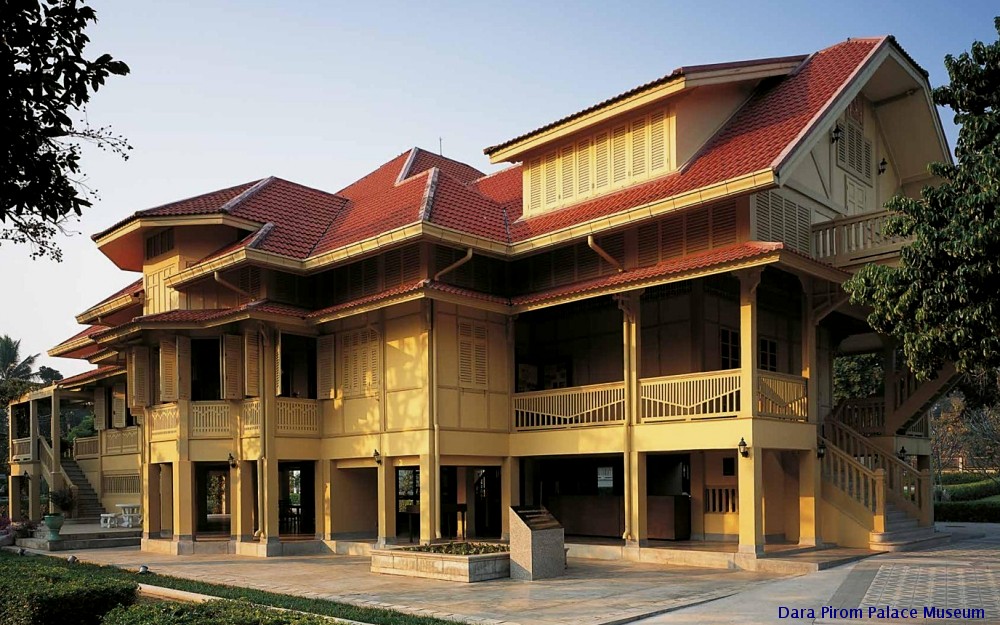

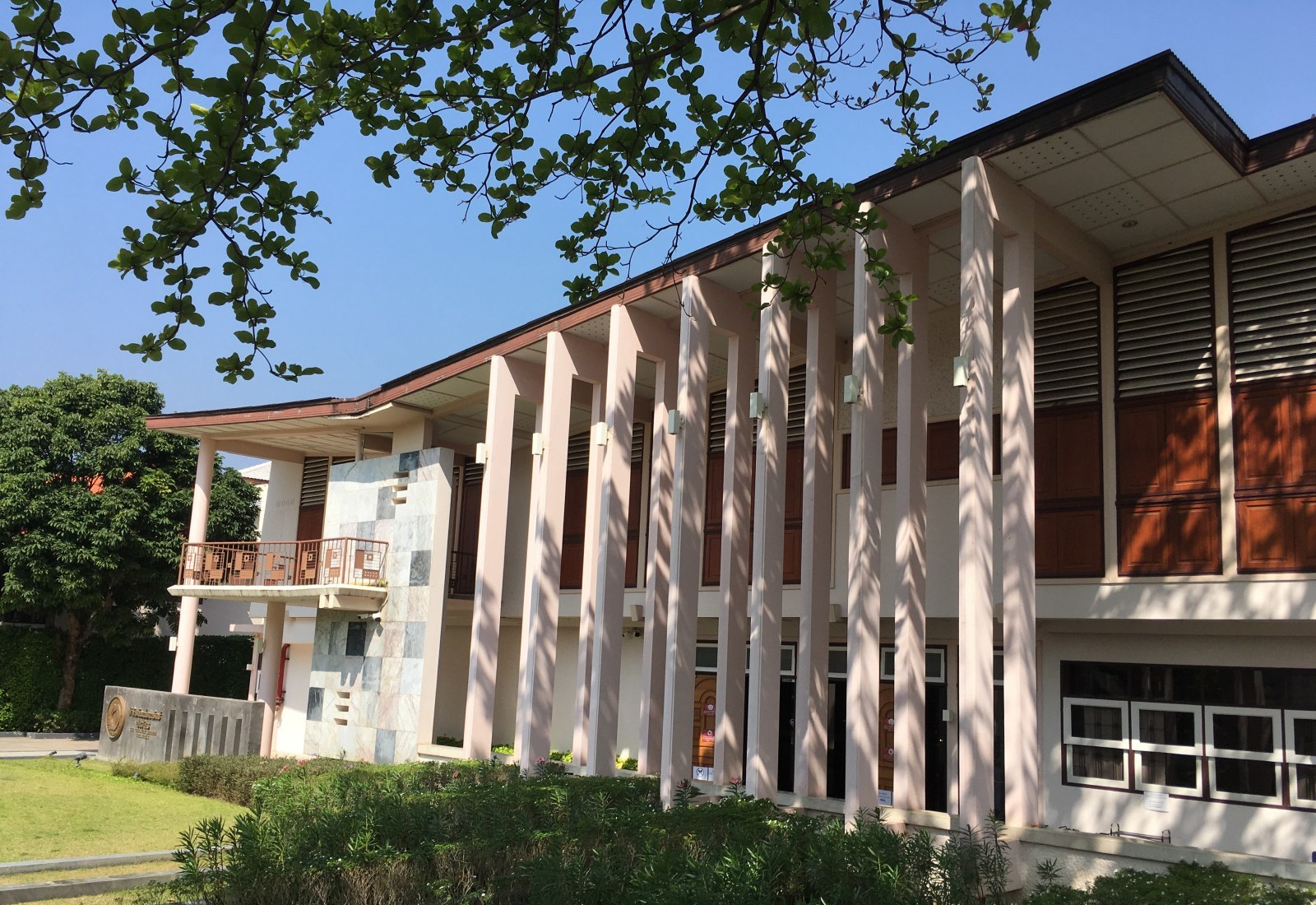
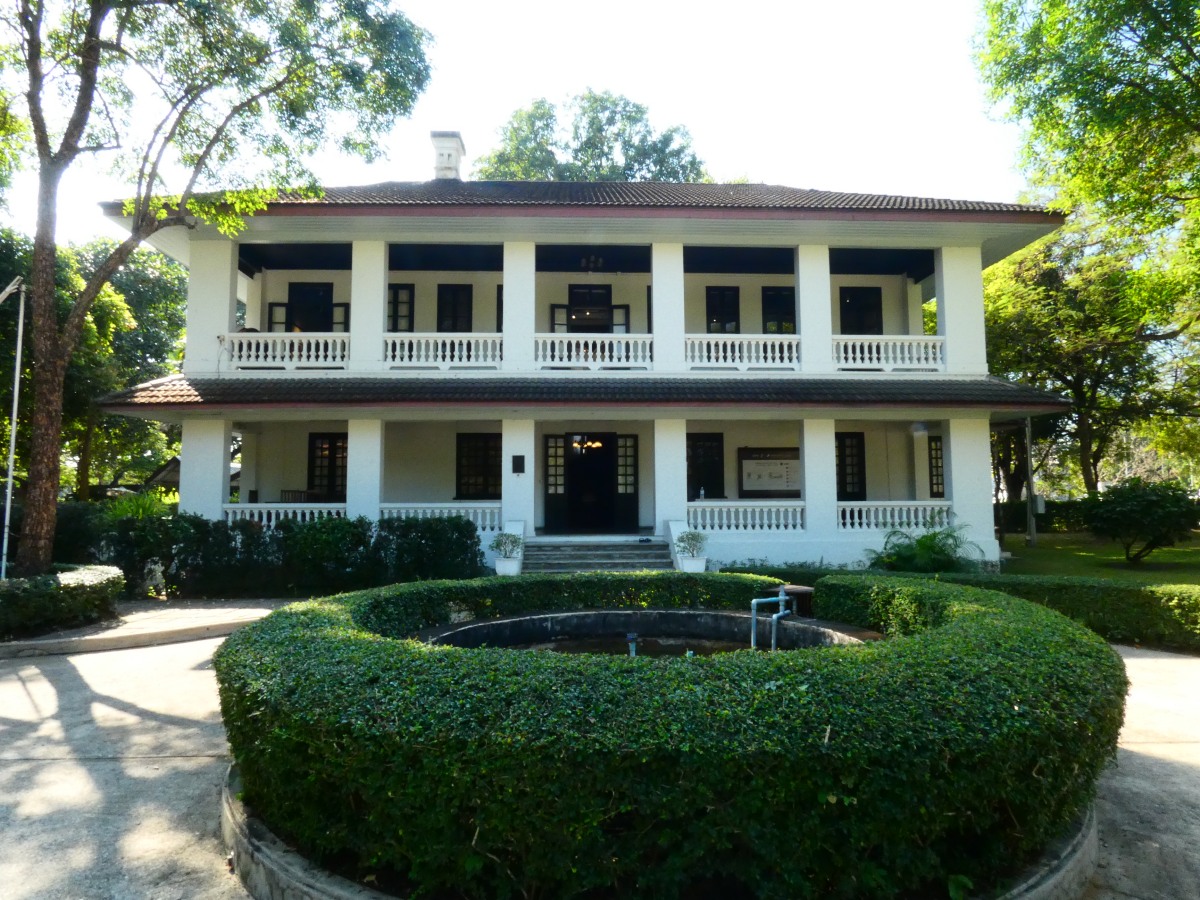
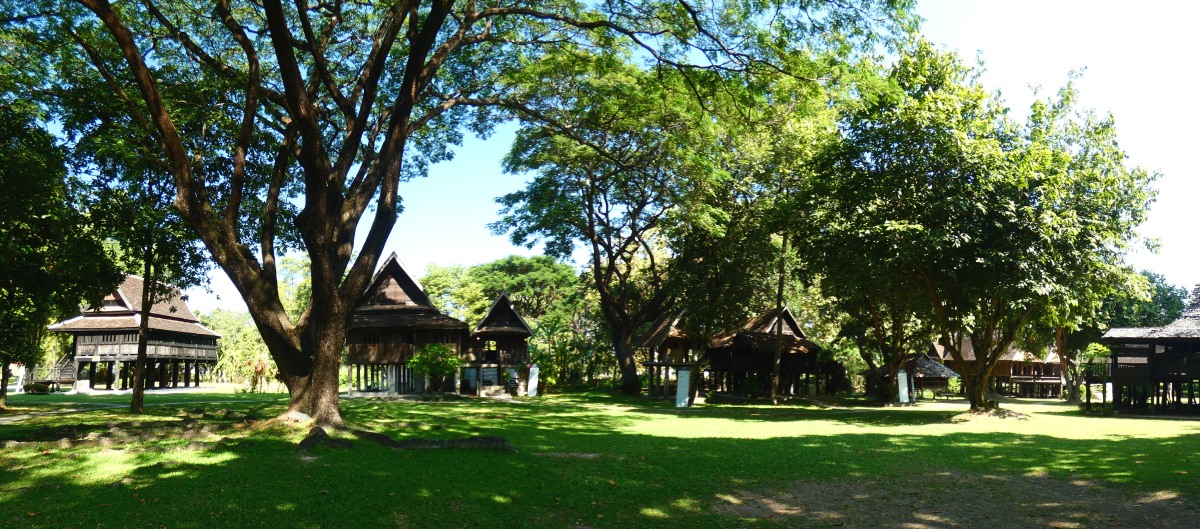
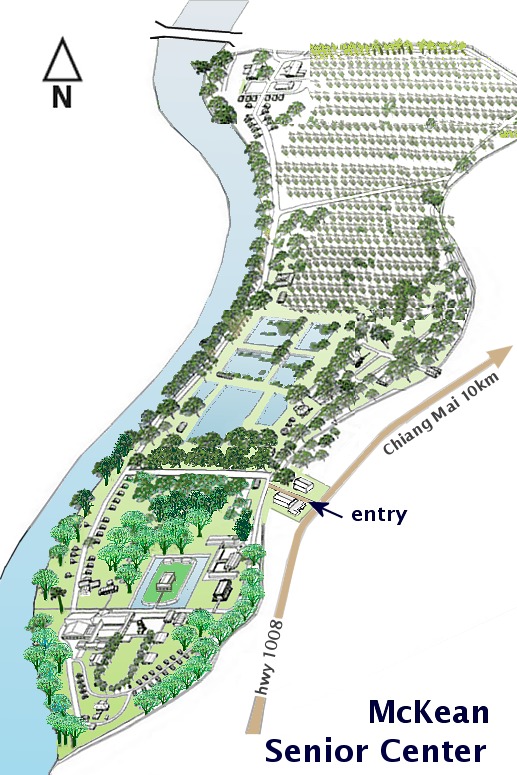 The McKean Senior Center is not a museum but an interesting and historic place. In 1905 Dr. James McKean got permission to establish a leprosy colony or leper asylum on a large island in the Ping river. Now the colony has been renamed to Dok Kaew Gardens and turned into a retirement home. The hospital, colonial houses, church and the many small dwellings for the leprosy patients are still there, between the many large trees, and surrounded by teak plantations.
The McKean Senior Center is not a museum but an interesting and historic place. In 1905 Dr. James McKean got permission to establish a leprosy colony or leper asylum on a large island in the Ping river. Now the colony has been renamed to Dok Kaew Gardens and turned into a retirement home. The hospital, colonial houses, church and the many small dwellings for the leprosy patients are still there, between the many large trees, and surrounded by teak plantations.
